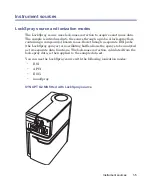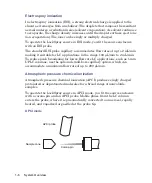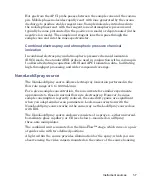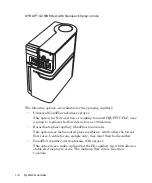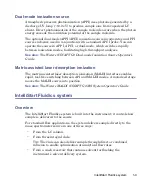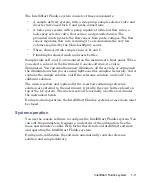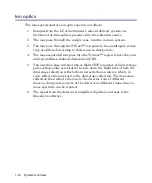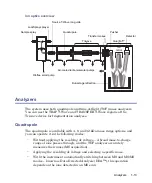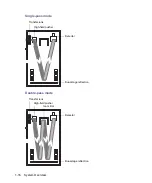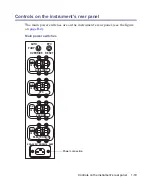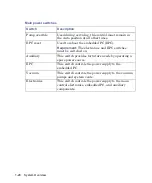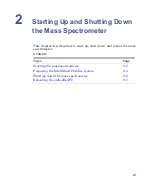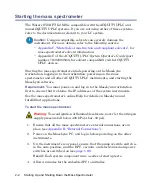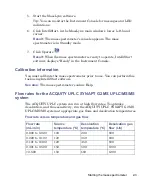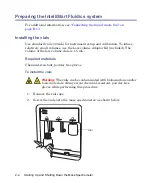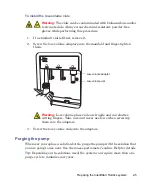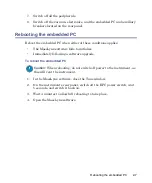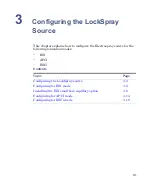
1-18
System Overview
Ions of different mass-to-charge ratios evidence different flight times. So when
the detector records the time an ion arrives, that time is converted to mass
and plotted against abundance to create a mass spectrum.
Users can define recorded mass-to-charge ratios up to 100,000 Da in
single-pass mode, or 32,000 Da in double-pass mode.
Leak sensors
Leak sensors in the drip trays of the SYNAPT G2 MS continuously monitor
the instrument’s IntelliStart Fluidics system for liquid leaks. A leak sensor
stops system flow when it about 1.5 mL of accumulated leaked liquid in its
surrounding reservoir. At the same time, the Instrument Console software
displays an error message alerting you that a leak has developed.
See also:
Waters ACQUITY UPLC Leak Sensor maintenance instructions
(part number 71500082506).
Vacuum system
The vacuum system consists of a scroll pump and six turbomolecular pumps
that pump down (evacuate) these regions of the system:
•
Source T-Wave ion guide
•
Quadrupole
•
Triwave device
•
Transfer lenses
•
Time-of-flight (TOF) analyser
The oil-free scroll pump backs the turbo pumps and rough pumps the first
vacuum stage.
Protective interlocks guard against vacuum leaks and electrical or vacuum
pump failure. The system monitors the turbomolecular pump speeds and
continuously measures vacuum pressure with built-in gauges. The gauges
also serve as switches, stopping operation when vacuum loss is sensed.
A vacuum isolation valve isolates the sample cone from the mass analyzer,
allowing the sample cone to be cleaned without venting the instrument.
Summary of Contents for SYNAPT G2
Page 18: ...xviii Table of Contents...
Page 46: ...2 8 Starting Up and Shutting Down the Mass Spectrometer...
Page 66: ...3 20 Configuring the LockSpray Source...
Page 228: ...B 24 External Connections 7 Click Next Result The software installs 8 Click Finish...
Page 232: ...C 4 Materials of construction and compliant solvents...


